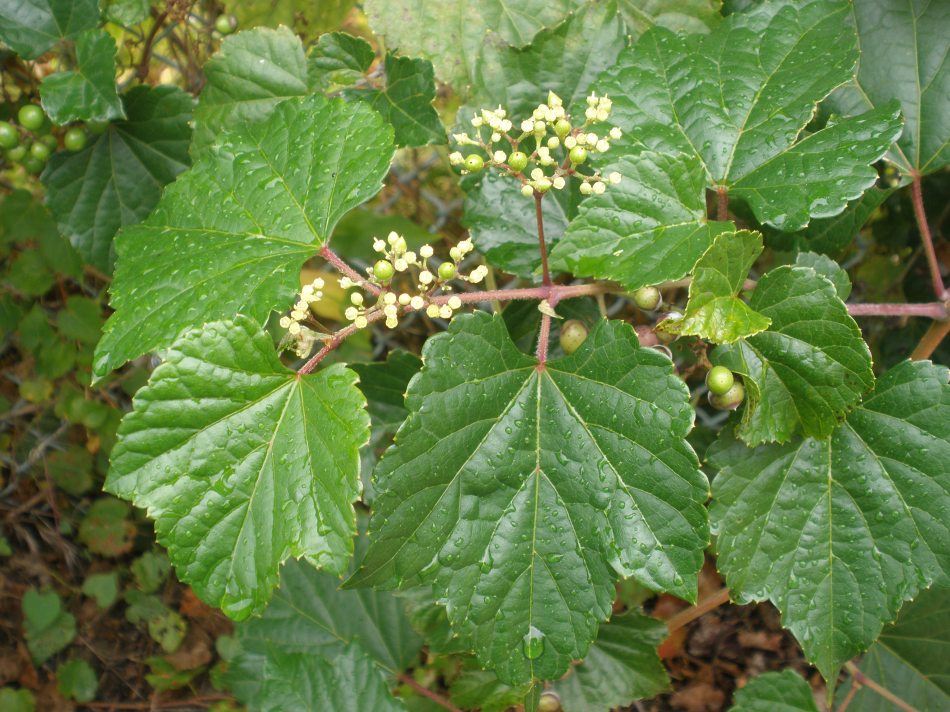 [Update: We had originally identified this as Boston Ivy, but a kind correspondent pointed out the error.]
[Update: We had originally identified this as Boston Ivy, but a kind correspondent pointed out the error.]
An Asian vine now considered an invasive species in our area, especially in the city. The National Park Service gives us this description:
Plant: deciduous, woody, perennial vine that resembles grape and climbs by non-adhesive tendrils at the base of each leaf; grows to 15-20 ft.; young twigs are usually pubescent; stem pith is white (grape is tan or brown) and is continuous across the nodes (except for V. rotundifolia, grape is interrupted by a diaphragm across the node); bark is dotted with lenticels and does not peel (grape bark lacks lenticels and peels or shreds).
Leaves: alternate, simple, 3-5 lobed to highly dissected with heart-shaped base and coarsely toothed margins, shiny underneath with hairs on veins.
Flowers, fruits and seeds: tiny, greenish-white flowers with petals separate at their tips occur in flat-topped clusters opposite the leaves; appear in summer (June through August); fruit is a speckled berry in colors ranging from aqua to pink to purple; each berry carries 2-4 seeds.
Spreads: by seed that is eaten by birds and other small animals and dispersed in their droppings.
Look-alikes: native species of grape (Vitis) and peppervine (Ampelopsis) including heartleaf peppervine (Ampelopsis cordata) which is native to the Southeast and has unlobed leaves and smooth (hairless) stems; other native Ampelopsis have compound leaves.
These vines sprawled over a chain-link fence in the back streets of Oakland, where they were blooming and fruiting in the middle of October.


3 responses to “Porcelain Berry (Ampelopsis brevipedunculata)”
I don’t think I’ve ever seen Parthenocissus tricuspidata in fruit, but are you sure this isn’t Ampelopsis brevipedunculata?
As far as I can see, you’re absolutely right, which is the wonderful thing about the Internet. How long would it have taken somebody to point out my obvious mistake before we were all connected? The listing will be updated soon; only work on other projects keeps it from being taken care of right away.
Ah … I was gonna say, never heard it called Boston ivy. Porcelain-berry, or false wild grape. What I want to know is whether the leaves are edible. It’s so prevalent here in Maryland, and so difficult to distinguish from wild grapes, that I don’t dare collect wild grape leaves for collared.